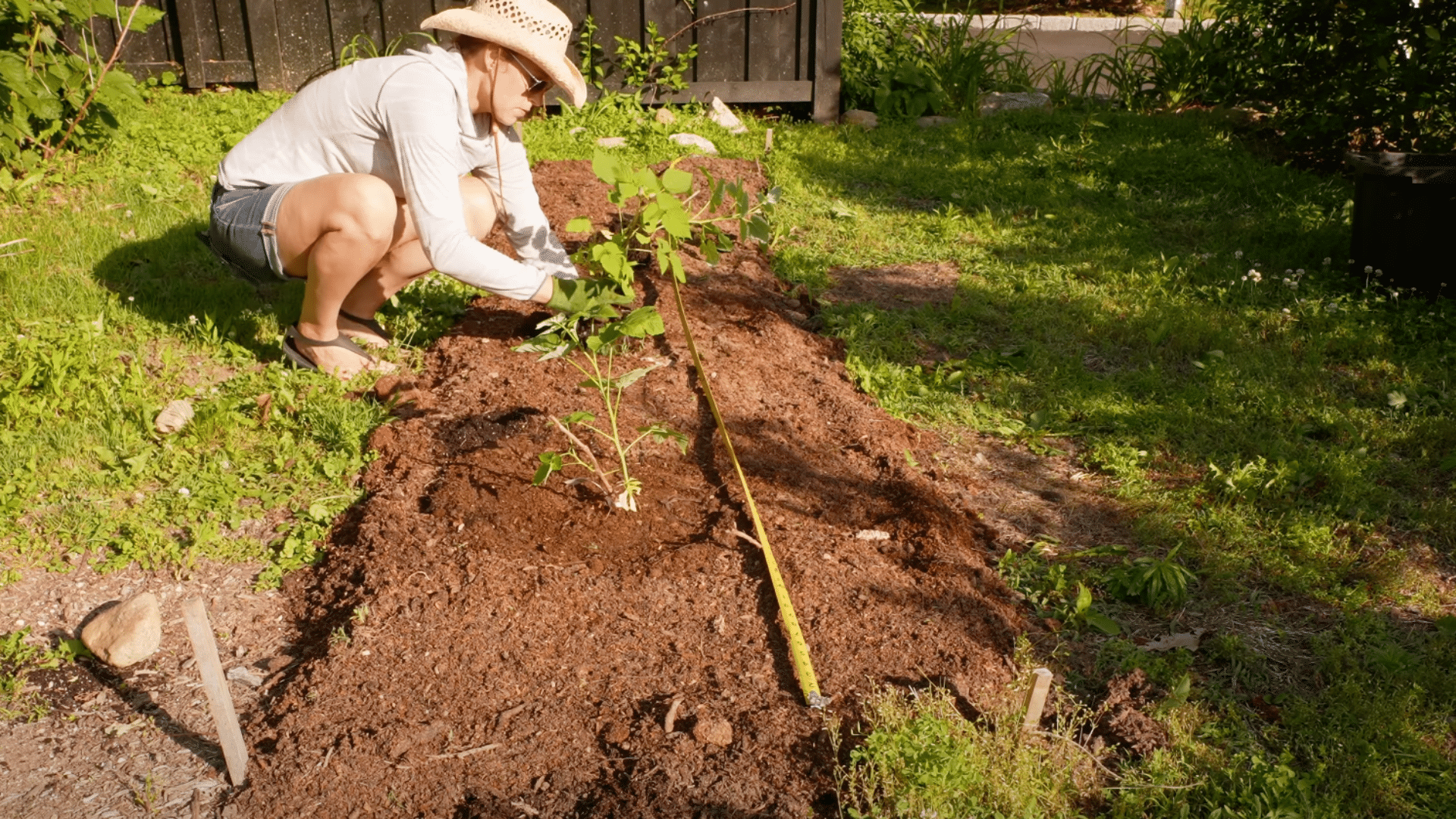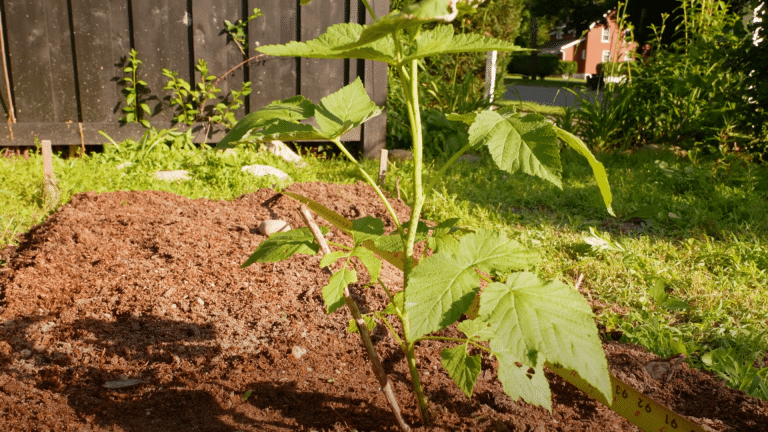You can water raspberries daily and move them to the sunniest spot, but if your soil’s not right, they won’t thrive. I’ve seen healthy-looking plants stall just because the ground wasn’t doing its job.
Soil might not seem exciting, but it makes or breaks your raspberry patch. Get it wrong, and all that effort goes nowhere.
In this post, you’ll learn what kind of soil raspberries need, the best pH range, and how to fix problems before they get worse. I’ll show you how to test and improve your soil the easy way.
If you’re serious about growing berries that actually produce, it all starts below the surface.
Let’s dig in.
Do Raspberries Like Acidic Soil?
Yep, they sure do. Raspberries thrive in slightly acidic soil, nothing too fancy, just in that sweet spot between 5.6 and 6.2 on the pH scale. That range helps their roots grab hold of the good stuff like nitrogen and phosphorus.
If your soil’s too far off in either direction, it won’t matter how much fertilizer you throw down. The plant won’t absorb it right.
So, before you get carried away planting or feeding, grab a cheap pH tester and find out what you’re working with. That little number tells you a lot.
Soil Composition: What Raspberries Need
Raspberries like soil that’s light, loamy, and drains like a champ. Loamy soil is your gold standard; it’s got the right mix of sand, silt, and clay to hold moisture without turning into a swamp.
If your dirt’s too thick or packs tightly, it’ll trap water around the roots and rot your plants faster than a summer thunderstorm.
Quick check: dig a hole, fill it with water, and see what happens. If it’s still puddled an hour later, you’ve got drainage issues.
Grab a handful of damp soil and squeeze. If it sticks together like gumbo, you’ve got too much clay. Time to fix that mess.
How to Check and Adjust Raspberry Soil pH
If your raspberries aren’t growing well, the soil pH might be off. A quick check can tell you a lot—and fixing it isn’t hard.
Here’s how to test and adjust your soil step by step:
- Get a basic pH test kit: You’ll find one at any garden store or online. A simple strip or color test is enough.
- Scoop your soil and mix with water: Follow the kit’s directions. Usually, you’ll dip a strip or add a solution and match the color.
- If it’s too high (alkaline): Mix in compost, pine needles, or a bit of elemental sulfur to lower it.
- If it’s too low (acidic): Use ground limestone to raise the pH, but go slow and follow the label.
- Work it into the soil: Mix changes 6–8 inches deep. Do this a few weeks before planting.
- Test again later: Recheck in a few weeks or midseason. Aim for a pH between 5.6 and 6.2.
Don’t rush it. When your pH is in the right range, your raspberries can finally soak up the nutrients they need to grow strong.
Amending the Soil Before You Plant
Don’t just dig a hole and hope for the best. Get your soil right first. Mix in some good compost, leaf mold, or aged manure. Not the fresh stuff that’ll burn your roots faster than a hot grill in August.
Spread 2 to 3 inches of that organic matter and work it into the top 6 to 10 inches. If your soil’s hard as a rock or sandy like a beach, add a little extra.
You’re building a bed that drains well but still holds onto enough moisture to keep raspberries happy. Take 20 minutes now, save yourself a headache later.
Raised Beds or In-Ground: Which is Better?
If your soil’s tighter than a drum or you’ve got drainage problems, go with raised beds. They let you control everything: soil mix, pH, drainage. Think of it like giving your raspberries their own custom home.
But if your yard drains well and the soil’s already decent, plant straight in the ground. It’s cheaper, holds moisture better, and works just fine for berries.
Bottom line? If you’ve killed plants in that spot before because of soggy roots, raised beds are your fix. If the ground’s good, save the lumber and dig a hole.
Signs Your Soil May Need Help

You can learn a lot by looking at your plants. Yellowing leaves, small fruit, or poor growth may point to soil problems.
Soil that stays soggy or forms a crust when dry also needs work. You might need to add compost, fix pH levels, or break up compacted ground.
Before planting, take the time to dig in and check. A few small fixes now can save your crop later.
Maintaining Healthy Soil Over Time
Planting raspberries isn’t a one-and-done deal; your soil needs steady upkeep. Toss on some compost each spring. It keeps nutrients flowing and the ground working like it should.
Go easy on the fertilizer. Pouring on too much just gives you floppy canes and less fruit. Use what your plants need, no more, no less.
Mulch smart. A thin layer helps hold water and block weeds, but don’t pile it up around young shoots. And when it’s dry, skip the sprinkles. Water deep, so roots dig in and stay strong.
Common Mistakes to Avoid
You’d be surprised how many raspberry failures start before the plants even hit the dirt. A few skipped steps, and boom, floppy canes, yellow leaves, and no berries. Don’t fall into the usual traps.
Here’s what to watch for:
- Skipping the pH test: If you don’t test, you’re flying blind. Wrong pH? Nutrients won’t get used, period.
- Using the wrong compost: Fresh manure? Not ready for compost? That stuff will fry your roots and wreck your soil.
- Overwatering: Raspberries aren’t rice. Soggy soil means dead roots and rot, especially if your ground’s heavy.
- Mulching too thick: Piling mulch like a pillow around the stems just chokes out new canes and traps too much moisture.
- Planting without testing soil: If you didn’t check your soil first, you’re setting yourself up for a weak, stingy harvest.
Summing Up
Look, it’s easy to obsess over water and sunshine, but if your soil’s off, none of that matters. pH, drainage, structure, compost, that’s the real stuff that makes or breaks a raspberry patch.
If your plants flopped last year, don’t blame the weather. It was probably your soil talking back.
Now you’ve got the tools to fix it. Test it. Amend it. Stay on top of it. You don’t need perfection—just a solid foundation that gives your raspberries a real shot.
Need more help? I’ve got blogs on pruning, planting tricks, and seasonal care to keep your berry game strong. Give those a look and get after it.













